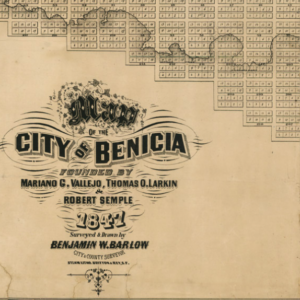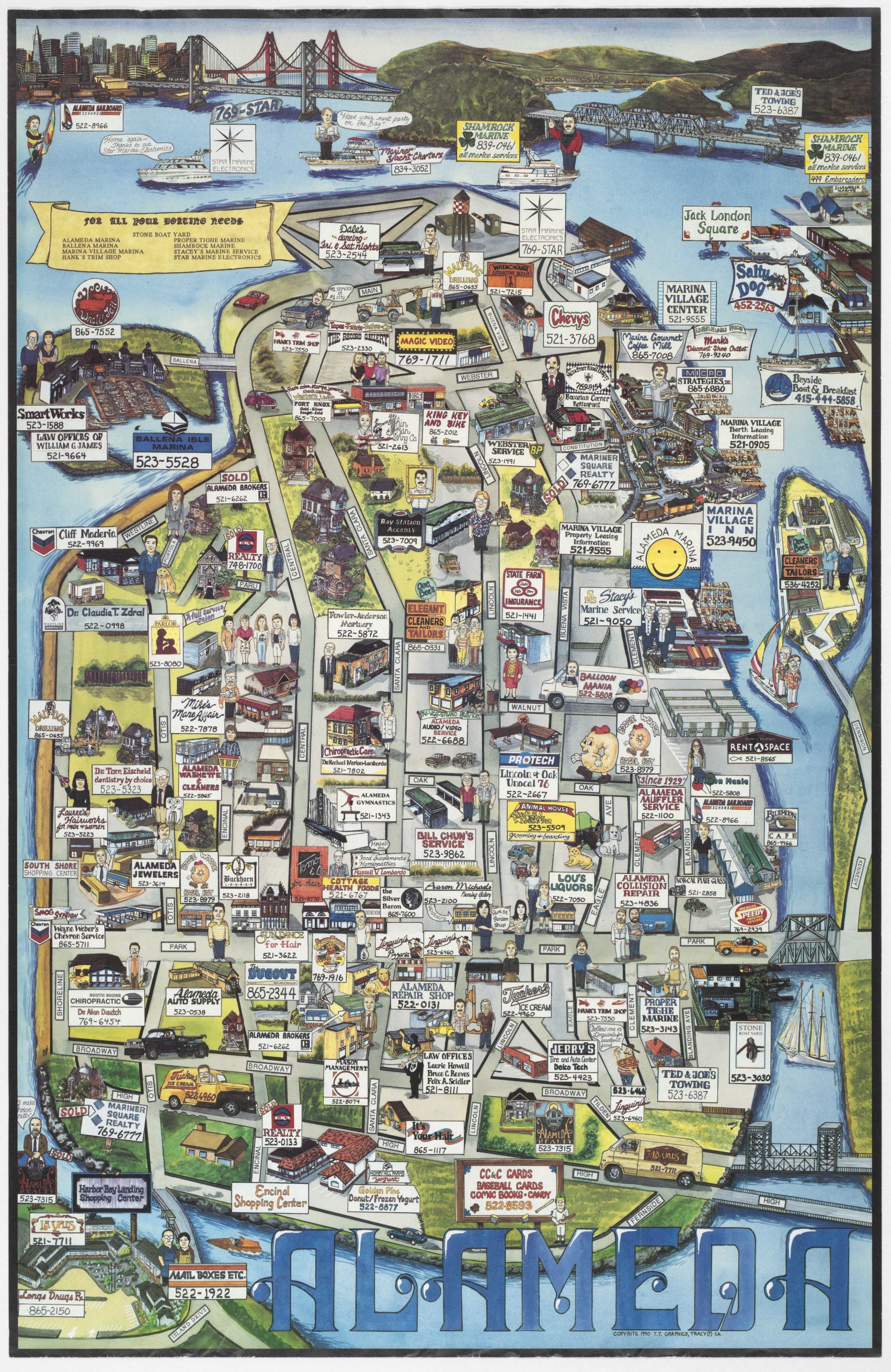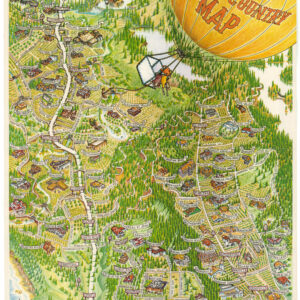The earliest known view of Oakland’s Lake Merritt.
[Oil Painting of Lake Merritt, Oakland]
$14,500
1 in stock
Description
A historic oil painting of Lake Merritt and Oakland’s iconic 12th Street Bridge.
This unique and early depiction of Lake Merritt presents an evocative view of the natural estuary in the 19th century. Looking north towards what would soon be Piedmont, we see the silhouette of Claremont Hills and Sibley Volcanic Reserve in the background. Captured from a vantage point along the southern shore, close to where the Oakland Museum stands today, the painting not only captures the lake and landscape but also the area around the 12th Street Bridge, which would develop into downtown Oakland.
The composition includes several details and features that allow us to tentatively date it to the mid to late 1870s. Prominently featured in the forefront of our scene is the Opposition Boat House, built around 1874, directly on the 12th Street Bridge at the lake’s southern end. A note in the 1875 edition of Bishop’s Oakland Directory highlights it: “Lake Merritt, a beautiful sheet of water situated on the north side of Twelfth Street, east of Oak, is now used at all times for boating and yachting; a fine boat house has been erected on Twelfth Street for the convenience of those who seek health and pleasure by such exercise.” Another note in the same lists one Thomas M. Blair as the proprietor. By 1878, the new edition of the directory lists O.B. Jenner as co-owner of the boat house.
While early photographs confirm the location, another vital clue is the artist’s inclusion of a horse-drawn streetcar in front of the boat house. This early means of public transport was established in 1871 by the Oakland Brooklyn & Fruit-Vale Railroad Company. It was affectionately referred to as the Tubbs Line because of its connectivity with the iconic Tubbs Hotel on Fifth Avenue (built in 1870). By the time of the line’s completion in 1873, it ran from Seventh and Broadway north to 12th Street and east to 13th Avenue (Thrall 1960). The horse-drawn street cars were replaced by steam trolleys in the early 1880s, setting a terminus ante quem for our painting.
If we look at maps of Oakland from this period, we note the inclusion of the Tubbs Line on these maps. Malcolm King’s Map of Oakland, Alameda, and Vicinity from 1876 clearly shows how the line crosses the bridge but does not follow the coast, underscoring that the boat house was built on (or immediately adjacent to) the bridge itself. Various photographs dating between 1890 and 1900 confirm its location on the actual bridge.
The Opposition Boat House
The boat house in the painting has the words O(p)position Boat House written on the side. Oakland city directories begin to include references to ‘The Opposition Boat House’ as far back as the early 1880s, indicating our painting may be of roughly this date.
The name relates to a private ferry line connecting Oakland to San Francisco. We know that such ferries existed as far back as 1858 when they are mentioned in The Alta Californian daily newspaper:
“I stepped on board the San Antonio, the opposition boat, for Oakland. She is a most elegantly appointed steamer and doubtless is the largest and most convenient ferryboat in the world.”
The ferry services were called opposition ferries because they originally had challenged the exclusive ferrying privileges granted to E.R. Carpentier by Oakland in 1853 (Baker 1914: 58). Carpentier was the son and heir to one of the town’s founders. By the time our canvas was painted, the term had ceased to have this explicit connotation. The term’s resilience may have been anchored in Oakland’s foundation story. Three men (Horace Carpentier, Edson Adams, and Andrew Moon) set up the initial settlement on Peralta Island in 1851 – just before Congress voted the Land Commission into effect.
At first, the new settlement was called Contra Costa, or ‘Opposite Coast,’ in reference to San Francisco, but by March 1854, it had been formally renamed the City of Oakland. Through the original Contra Costa town council, Horace Carpentier obtained the franchise to construct a toll bridge at Twelfth Street. This stood completed in 1853, shortly before Oakland’s official incorporation in the state legislature, allowing Carpentier to make a fortune. Five years later, the city council granted his son exclusive ferrying rights to and from San Francisco. The concept of opposition was, in other words, well-founded and quite established by the 1880s.
A postcard dated 1908 shows the house in a re-purposed and somewhat dilapidated state. In 1909, a new municipal boat house was opened further up the western coast of Lake Merritt (where The Lake Chalet Seafood Bar & Grill is located today), giving us a rough timeline for its existence.
Concluding remarks
This painting holds obvious historical significance as a visual record of how the area around Oakland’s 12th Street Bridge evolved during its first years.
The Brooklyn & Fruit-Vale Railroad Co.’s horse-drawn streetcar and textual references to the Opposition Boat House allow us to date the scene between 1875 and 1880 with some certainty.
The artist remains somewhat elusive, adding an air of mystery to the historical significance of this wonderful canvas.
Census
Any painting such as this is, by definition, unique. However, in an attempt to position our view within the context of early depictions of Lake Merritt, we have discovered that this probably constitutes the earliest known dedicated depiction.
Some of the first dedicated maps of Oakland, such as Alexander J. Bache’s Survey of San Antonio Creek from 1857, capture the lake in vivid detail. Similarly, a number of photographs from the 1880s and 1890s exist in both private and institutional collections.
Cartographer(s):
The painting is signed F. Schmidt in the lower right corner. Based on census documents and local directories from the 1870s, we have identified two candidates living in Oakland around this time. The first is Frederick Schmidt, who is listed as an artist residing at 801 East Fourteenth Street in the 1875 Bishop’s Oakland Directory.
The second is Forest Schmidt, who, in the 1880 Alameda County census, was listed as a painter born in Wisconsin around 1855 and a resident of 512 8th Street. Forest may have changed his last name to Smith, for in the 1910 census of Oakland, a Forest Smith, also from Wisconsin and born around 1855, is listed with his wife and their two sons, Milton and Clarence. It is also possible that Frederick and Forest Schmidt are the same person.
Condition Description
Good. Oil painting on canvas. Small cracks in paint throughout. In old wooden frame with gilt paint with signs of wear and age.
References
Adams, E. F. (1932). Oakland's Early History. Oakland (https://babel.hathitrust.org/cgi/pt?id=uc1.$b97050&seq=1)
Baker, Joseph Eugene (1914). Past and present of Alameda County, California. S.J. Clarke: Chicago.
Thrall, Don T. (1960). Oakland Brooklyn & Fruit-Vale Token. Calcoin News 14, 3: 77.





